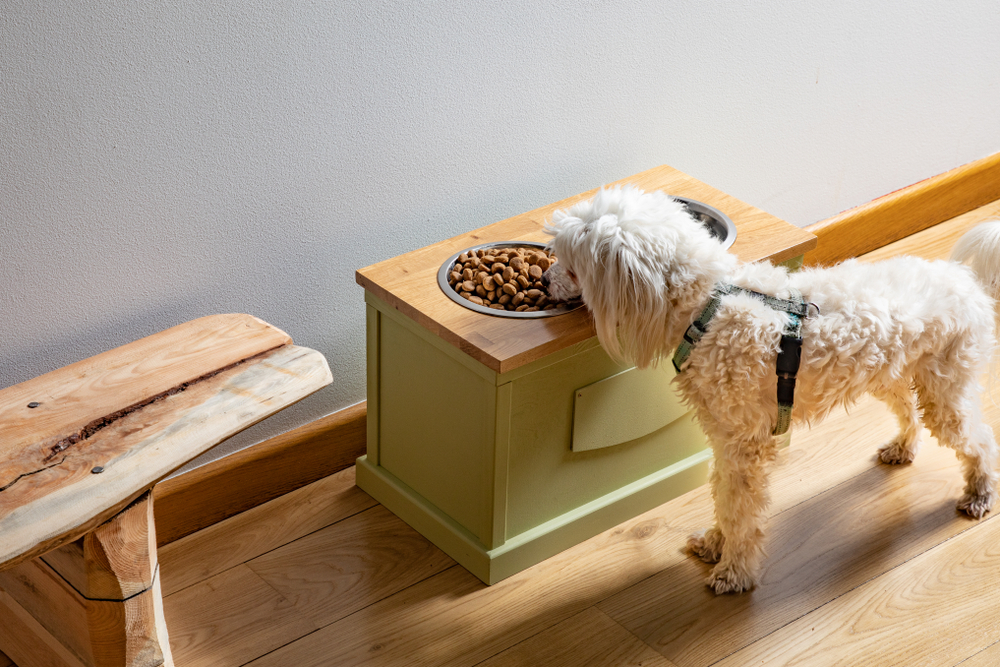You may be familiar with the aches and pains of arthritis, a joint disease that impacts many older people and pets. And, like people with arthritis pain, many senior pets suffer in silence and trudge through their days despite their discomfort. Pet owners can help their furry pal by recognizing early arthritis signs, bringing concerns to their veterinarian’s attention, and proactively managing complicating factors, such as weight. The Envision More Veterinary Ophthalmology team shares how to identify and manage arthritis in senior dogs and cats.
Pet arthritis causes and risk factors
The exact triggering cause for arthritis is not well understood, but the disease most frequently begins in middle or older age when the cartilage that cushions joints and prevents abnormal bone movement degrades and wears away, triggering inflammation and pain. The inflammation causes further tissue damage and the cycle continues to progress and cause worsening pain. Longstanding arthritis leads to joint instability, muscle atrophy, reduced range of motion, and chronic pain.
Arthritis risk factors include:
- Senior status
- Previous joint injury
- Joint malformations (i.e., hip dysplasia, patellar luxation)
- Obesity
Arthritis in senior cats
Recent studies show that up to 90% of cats have X-ray evidence of arthritis by age 12, although the process most likely begins during middle or early age. Signs in cats can be subtle and easily missed by their owners. Cats rarely overtly limp, but they may struggle to get into the litter box or to groom hard-to-reach areas. Potential arthritis signs in cats include:
- Hesitation to jump or use stairs
- Awkward sleeping positions
- Hiding
- Irritability
- Accidents outside the litter box
- Greasy or poorly groomed coat
- Reduced activity or play
- Reduced appetite
Arthritis in senior dogs
Arthritis signs are more easily detected in senior dogs than their feline counterparts. Dogs may limp, whine, or struggle to rise from sitting or lying down. Other signs include:
- Bunny hopping with the rear legs together
- Joint swelling or deformity
- Difficulty jumping or using stairs
- Slipping on hard surfaces
- Stiffness after resting
- Reduced activity or play
Diagnosing arthritis in senior pets
Your primary veterinarian will collect a thorough history, perform a complete physical examination, and order diagnostic tests, which may include X-rays, blood work, or a joint fluid examination, to make an arthritis diagnosis. Clues your veterinarian may note on physical examination include:
- Joint clicking or grinding (i.e., crepitus)
- Reduced joint range of motion
- Joint instability
- Pain during joint manipulation
- Muscle atrophy
- Altered gait
Managing arthritis in senior pets
The good news about arthritis is that many treatment options exist that break the inflammation and pain cycles, slow down disease progression, and improve comfort and mobility. Commonly used treatments include:
- NSAIDS — For dogs, drugs such as Rimadyl or Galliprant, which are safe for long-term use, can reduce pain and inflammation. These drugs are less commonly used in cats because of safety issues.
- Pain medication — Gabapentin is an excellent pain-reducing oral medication for dogs and cats. Opioids may also be used short-term.
- Alternative therapies — Acupuncture and chiropractic therapies can reduce pain and improve mobility with minimal side effects, which is especially good for older pets who may have co-existing conditions such as liver or kidney disease that make medications unsafe.
- Physical therapy — Swim therapy, treadmill, e-stim, ultrasound, and therapeutic exercise are a few tools used by veterinary rehabilitation specialists to improve arthritic pets’ function.
- Injectables — Newer monthly injectables for dogs and cats offer long-term pain control.
- Supplements — Early or mild disease may respond well to joint protectants, such as glucosamine or injectable glycosaminoglycans.
- Surgery — Joint fusion, joint replacement, or limb amputation may be appropriate in some end-stage arthritis cases.
Supporting senior pets with arthritis

You can best improve your pet’s mobility by keeping them at a lean, healthy weight. You can also make changes at home to improve their safety and provide easier access to resources. Consider the following for senior pets, whether or not they have been diagnosed with arthritis:
- Using rugs and runners to improve traction on hard surfaces
- Using or making low-sided litter boxes for easy entry and exit
- Placing pet stairs near favorite resting places and furniture
- Adding litter boxes, food and water bowls, and soft beds in multiple locations
- Using pet gates to control access to stairs
Chronic arthritis pain can slow your pet down, but treatments can significantly reduce pain, improve mobility, and slow disease progression, so they can get back to the activities they enjoy. Contact your pet’s primary veterinarian if you suspect your pet is feeling arthritis pain or discomfort. For your pet’s eye care needs, contact the Envision More Veterinary Ophthalmology team.







Leave A Comment